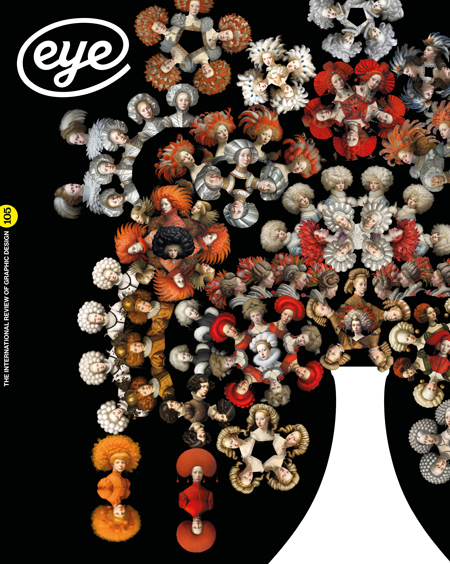Autumn 2023
Connecting a collection
A stylish pack of artist cards celebrates this German-Japanese collaboration. By John L. Walters
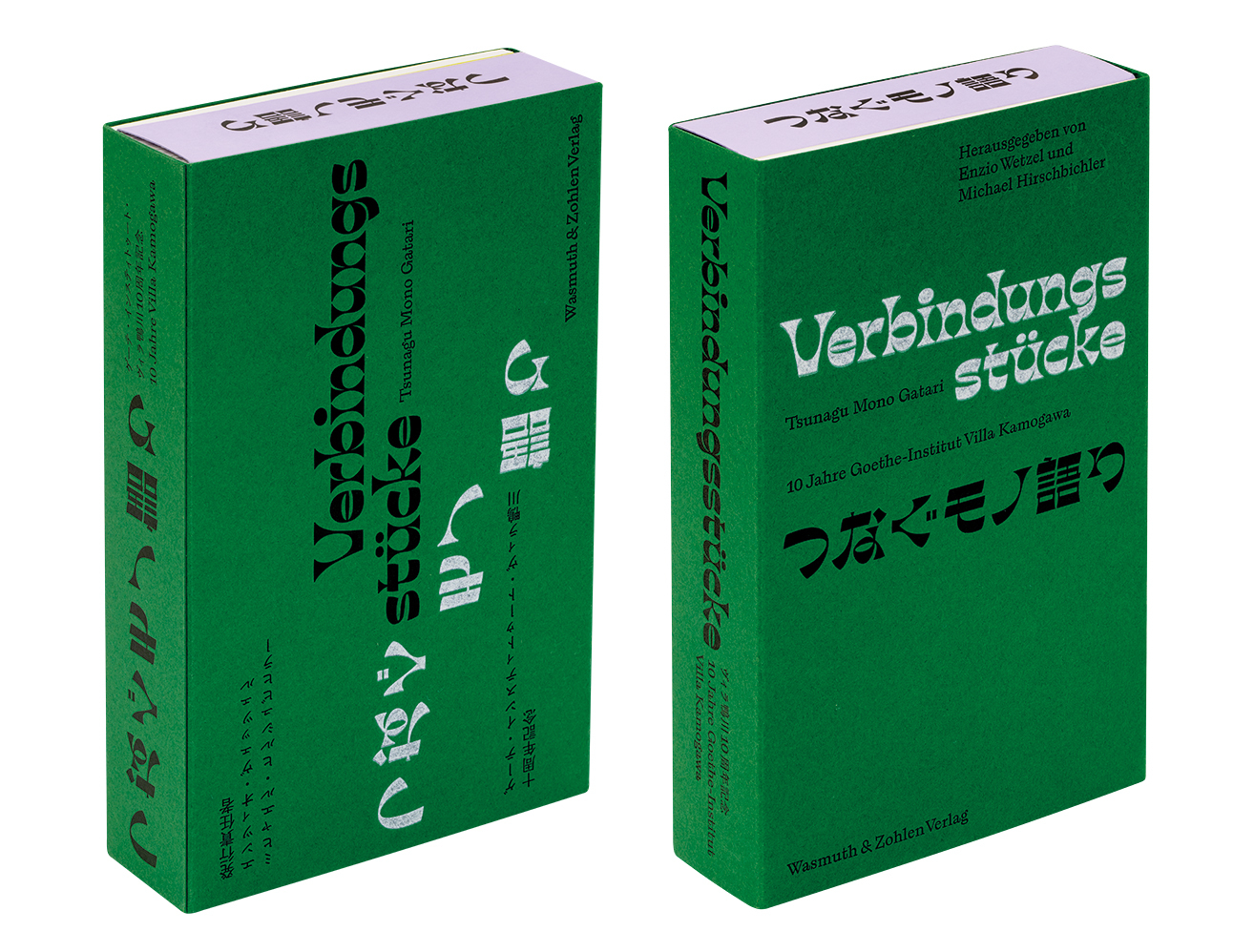
This bright green pack of Künstlerkarten (artist cards) has already been showered with awards, including one from the New York Art Directors club, and a ‘Best-in-Show’ from Communication Arts. Even those of us who understand little German and no Japanese can appreciate the craft and ingenuity employed by the designers of the bilingual Tsunagu Mono Gatari / Verbindungsstücke to combine languages on the colourful outer and inner sleeves, the 60-page booklet and the 73 card captions.
The result is a gallery in the hands, a retrospective of the Kyoto Goethe Institute’s Villa Kamogawa artist residency programme on its tenth anniversary. The artist cards feature an image on one side and captions in both languages on the other.
Designers Toshiya Izumo and Ferdinand Ulrich devised a multi-script typographic system that embodies the cooperative nature of the project, embracing the various directions in which text can be read. The striking display typeface is TienMin Liao’s unreleased, reverse-contrast Ribaasu, and the finished artefact has an easy flow that serves and complements both the art and the two languages.
The title comes from the Japanese and German terms for ‘connecting pieces’. The cards can be shuffled and viewed as one pleases; the booklet is arranged with German up front and Japanese pages running right-to-left from the other front cover.
Tsunagu Mono Gatari / Verbindungsstücke, a bilingual pack of 73 artist cards held in two tactile sleeves (green and lavender) with an accompanying 60-page booklet. Top. The booklet for Tsunagu Mono Gatari / Verbindungsstücke has two ‘front covers’, one in vertically set Japanese, the other in German.
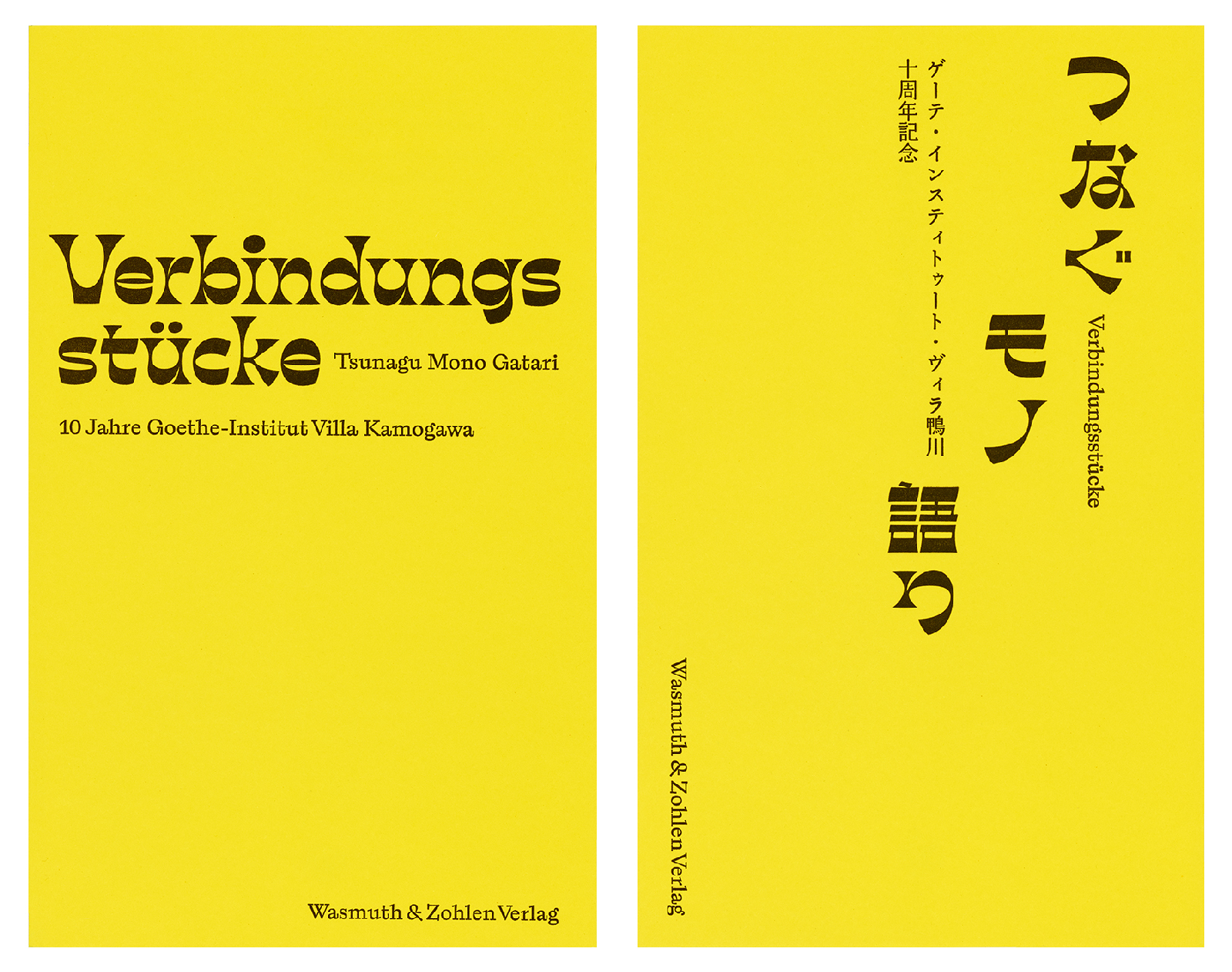
Ulrich and Izumo have been friends since they were students together at Berlin University of the Arts, but this is their first project together since graduation, ‘many years ago’. The Goethe Institute gave them a free hand, specifying just the need for a container that could be shipped in an XS-sized parcel. Their approach resulted in a series of typographic card backs on which the Japanese text set in MaruminKatura spars with the German set in Laica. Big bold Ribaasu kanji characters for the seasons – spring, summer, autumn and winter – announce the different cohorts to which the resident artists belonged while at Villa Kamogawa.
The booklet, set in the same three typefaces, is similarly unconventional. ‘From a Japanese typographic perspective,’ says Izumo, ‘it is rather unusual to typeset the text vertically in an art catalogue that contains several foreign words, so we did exactly that!’
The pandemic obliged the duo to work virtually most of the time, discussing the project in video calls and exchanging InDesign documents. ‘Since we split up the typesetting for each language, we had to work in separate documents and that resulted in different challenges,’ says Ulrich.
‘In the booklet, the different directions of opening books in Europe and in Japan came in handy: we each designed a document from either side that met in the middle.’
Of the 73 card backs in Japanese and German, few are typeset the same way. The bold Kanji characters represent the seasons.
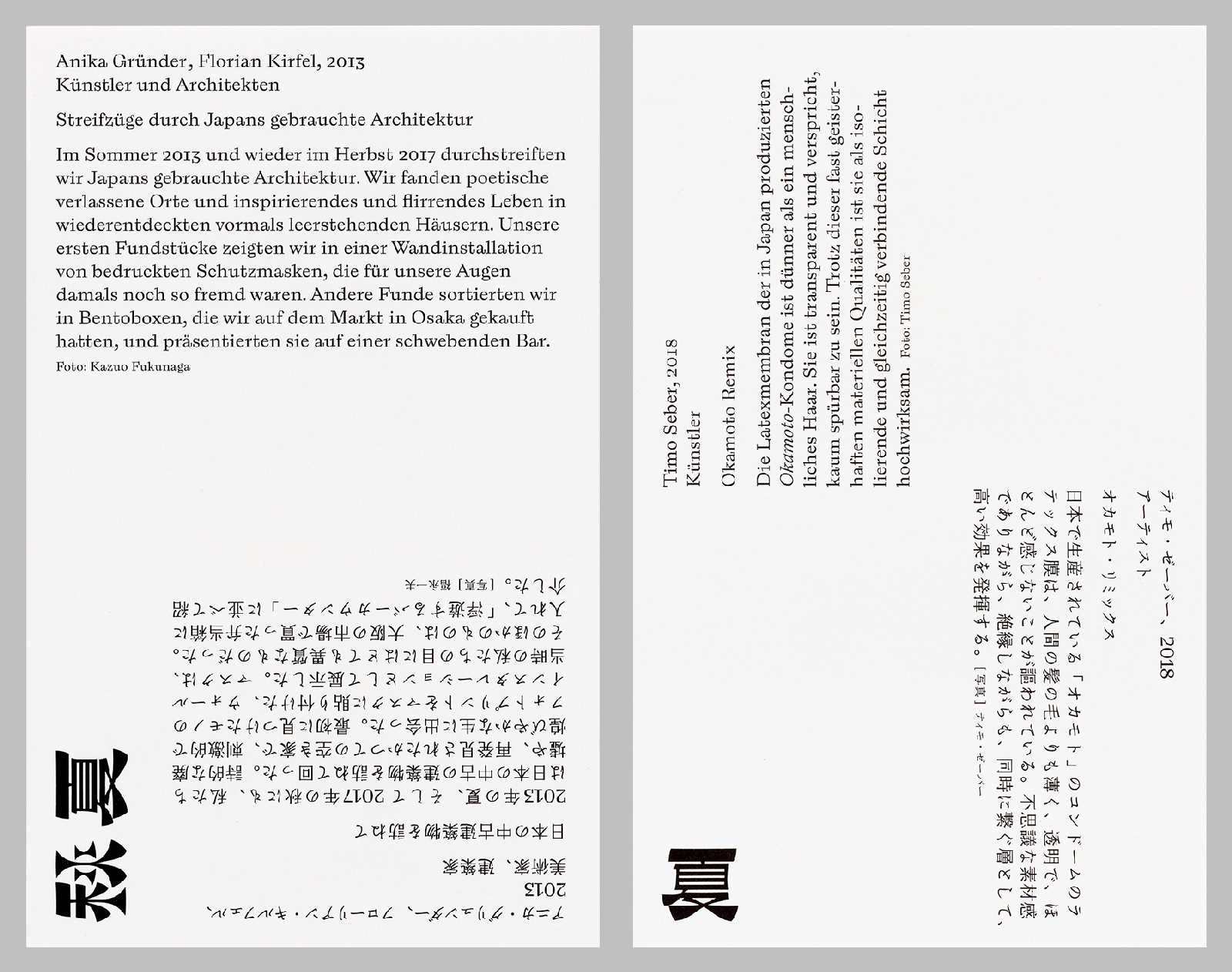
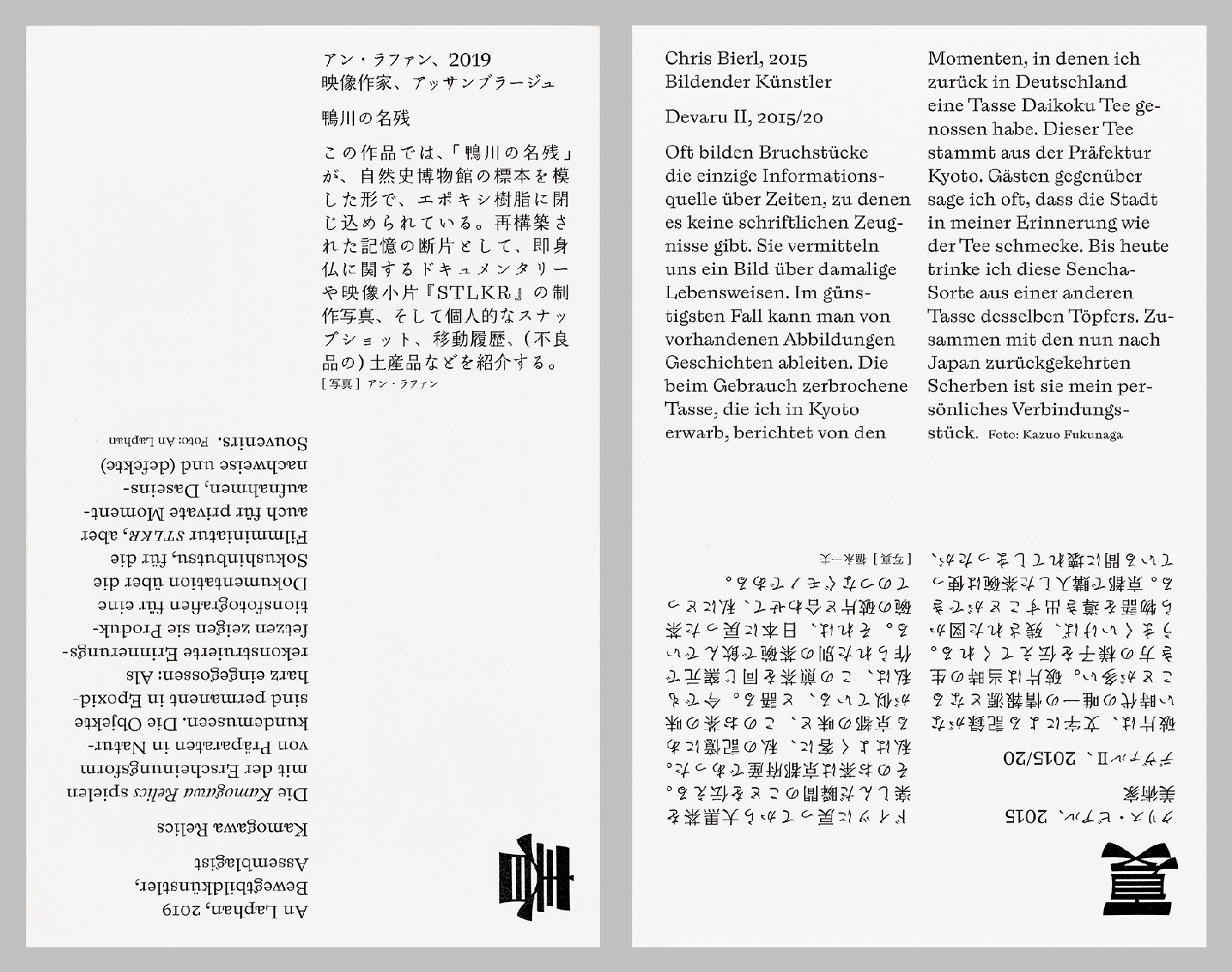
‘The Künstlerkarten were more tricky: every card is slightly different. Some of those designs went back and forth a bit, but Toshiya had the final say because only his InDesign version could be used to typeset Japanese.’
Ulrich says that setting the type on the covers and spines required meticulous hand-spacing: the Latin and Japanese characters were not extracted from a font, but from an Illustrator file. The covers and sleeves were printed letterpress with polymer plates in Die Lettertypen, Berlin, employing what owner Daniel Klotz calls ‘ADA Druck’ – analogue-digital-analogue letterpress.
John L. Walters, editor of Eye, London
First published in Eye no. 105 vol. 27, 2023
Eye is the world’s most beautiful and collectable graphic design journal, published for professional designers, students and anyone interested in critical, informed writing about graphic design and visual culture. It is available from all good design bookshops and online at the Eye shop, where you can buy subscriptions and single issues.

